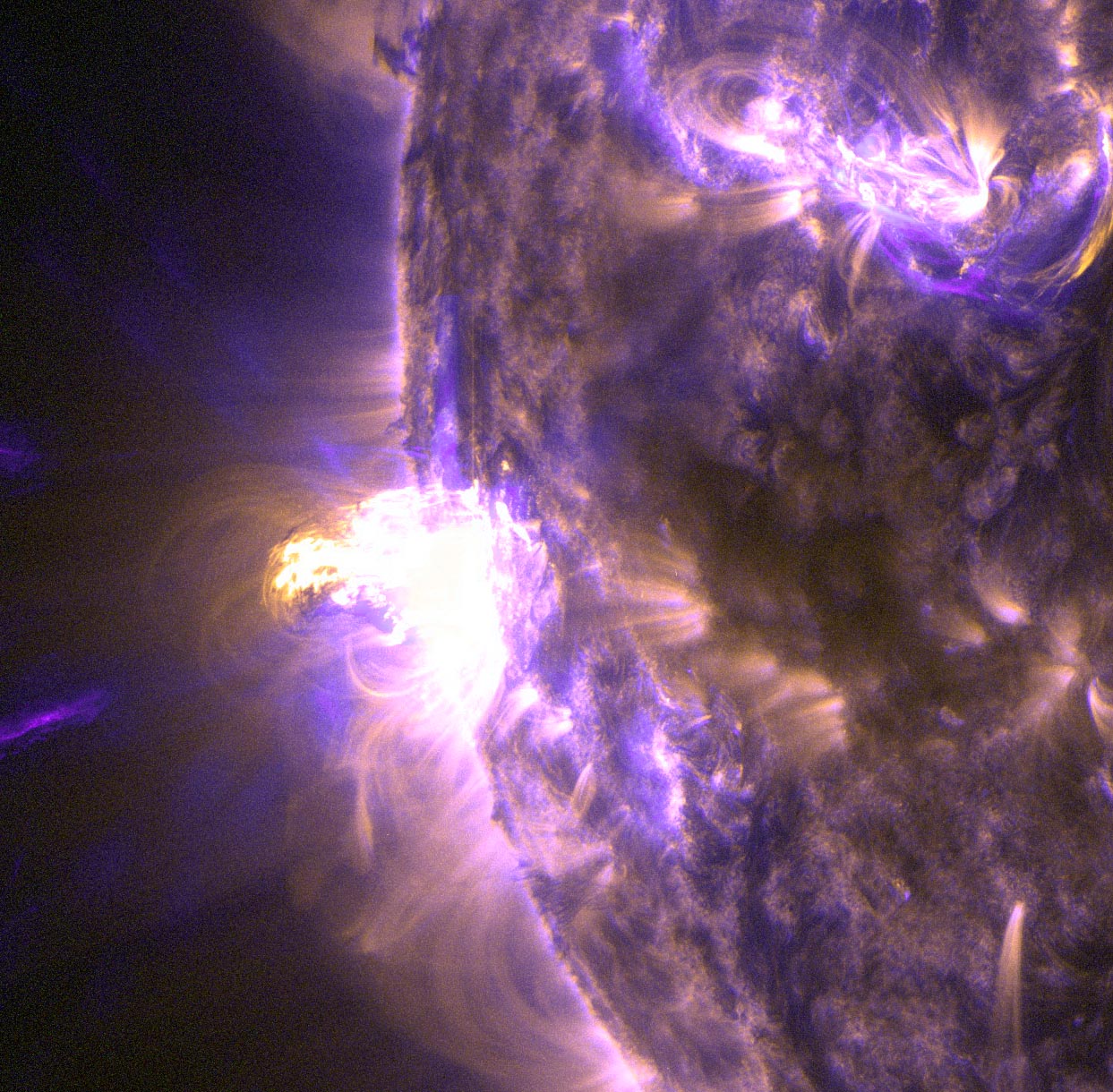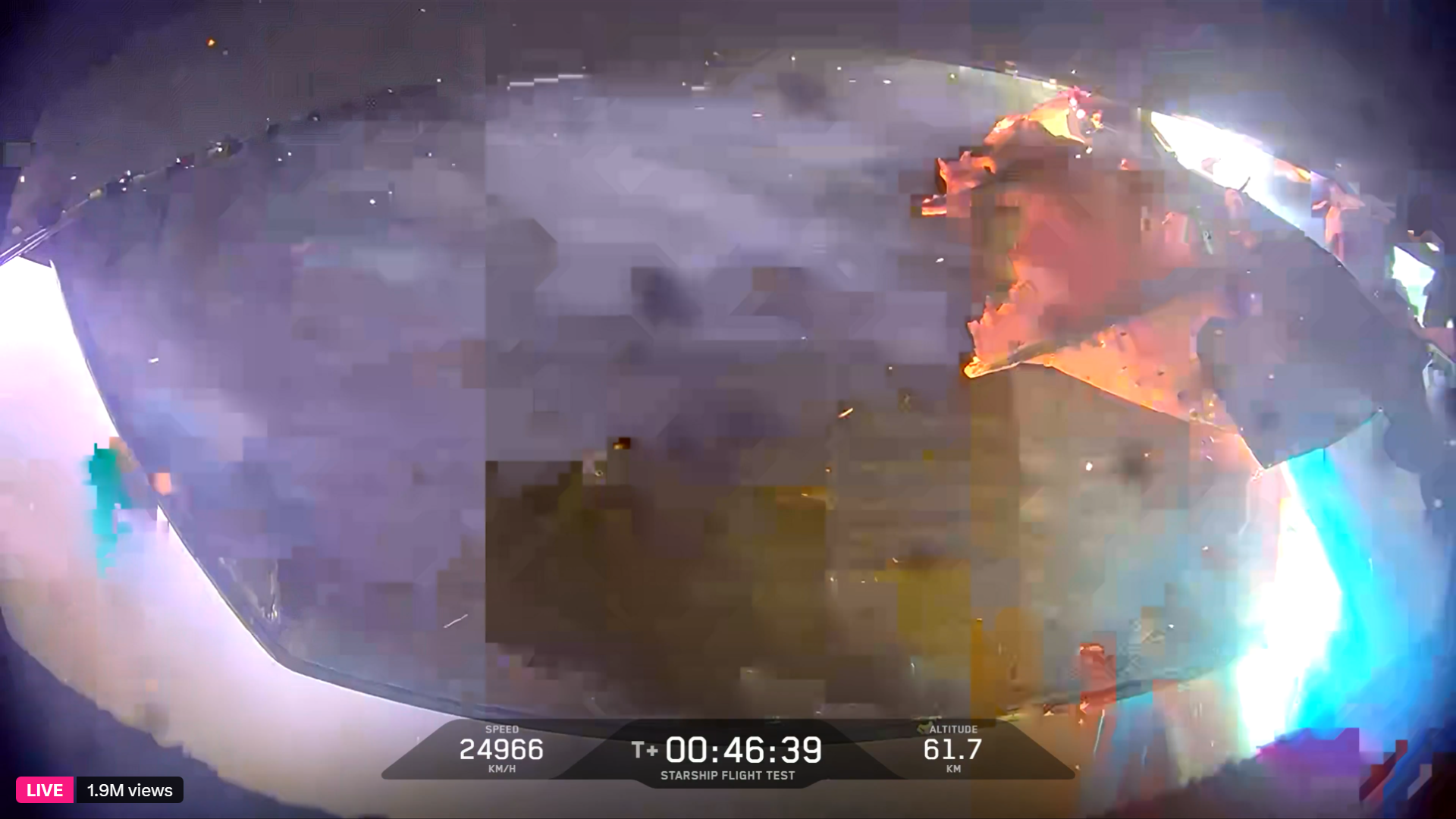Spectacular Solar Flare Erupts from the Sun (Photos, Video)
The sun kicked off this week with an explosive solar flare that, while not aimed directly at Earth, may be a hotspot to watch over the next few days.

The solar flare erupted on Sunday morning (Aug. 24) from an active sunspot known as AR2151. Two sun-watching spacecraft captured stunning video of Sunday's solar flare as it leapt off the surface of the sun at 8:16 a.m. EDT (1216 GMT).
While sunpost AR2151 wasn't facing Earth at the time of the flare, it is a place to watch in the days and weeks ahead. "The responsible sunspot will turn toward Earth in the days ahead, boosting chances for geoeffective solar activity as the week unfolds," experts with the space weather website Spaceweather.com wrote on Sunday.
Sunday's flare was an intense M5.6 solar eruption on the scale used by scientists to measure space weather events. M-class storms are about 10 times weaker than X-class flares, the most powerful storms on the sun, NASA spokeswoman Karen Fox wrote in a statement.
"Solar flares are powerful bursts of radiation," Fox added. "Harmful radiation from a flare cannot pass through Earth's atmosphere to physically affect humans on the ground, however — when intense enough — they can disturb the atmosphere in the layer where GPS and communications signals travel."

When aimed at Earth, M-class solar flares can amplify the planet's northern lights displays, causing amazing aurora views for observers at high latitudes. Earth-directed X flares, meanwhile, can pose a danger to astronauts in space, as well as interfere with satellite communications and navigation systems.
The Sunday solar flare was captured on video by NASA's powerful Solar Dynamics Observatory and the Solar Helospheric Observatory (SOHO) overseen by NASA and the European Space Agency. The two space observatories are part of a fleet of spacecraft keeping a close eye on the sun's space weather events.
Breaking space news, the latest updates on rocket launches, skywatching events and more!
The sun's activity rises and falls on a 11-year space weather cycle. The current cycle is known as Solar Cycle 24.
Email Tariq Malik at tmalik@space.com or follow him @tariqjmalik and Google+. Follow us @Spacedotcom, Facebook and Google+. Original article on Space.com.

Join our Space Forums to keep talking space on the latest missions, night sky and more! And if you have a news tip, correction or comment, let us know at: community@space.com.

Tariq is the award-winning Editor-in-Chief of Space.com and joined the team in 2001. He covers human spaceflight, as well as skywatching and entertainment. He became Space.com's Editor-in-Chief in 2019. Before joining Space.com, Tariq was a staff reporter for The Los Angeles Times covering education and city beats in La Habra, Fullerton and Huntington Beach. He's a recipient of the 2022 Harry Kolcum Award for excellence in space reporting and the 2025 Space Pioneer Award from the National Space Society. He is an Eagle Scout and Space Camp alum with journalism degrees from the USC and NYU. You can find Tariq at Space.com and as the co-host to the This Week In Space podcast on the TWiT network. To see his latest project, you can follow Tariq on Twitter @tariqjmalik.
